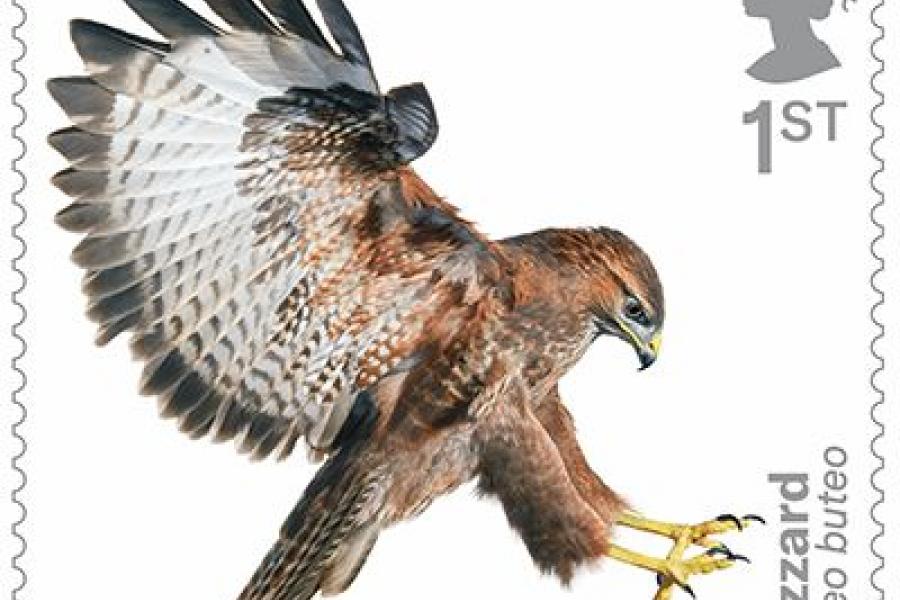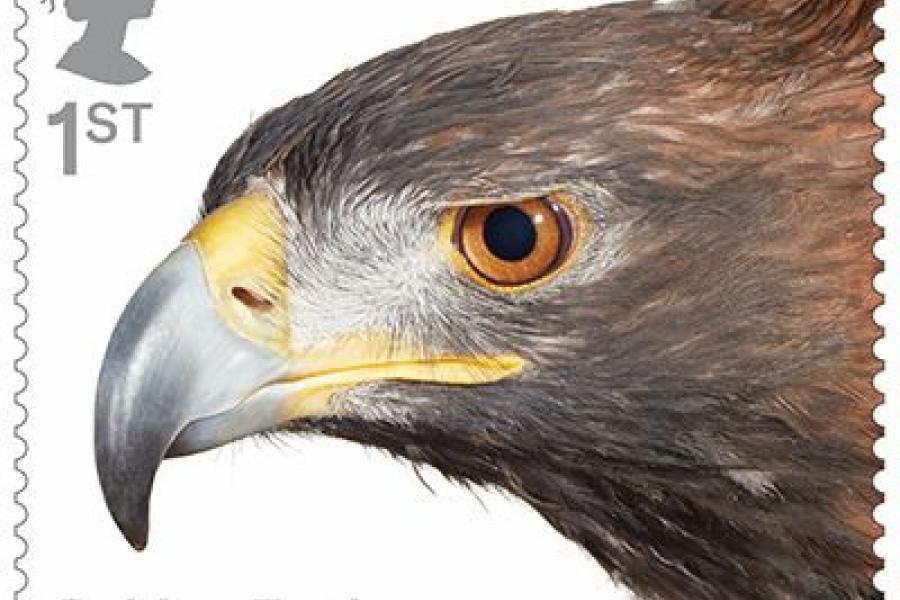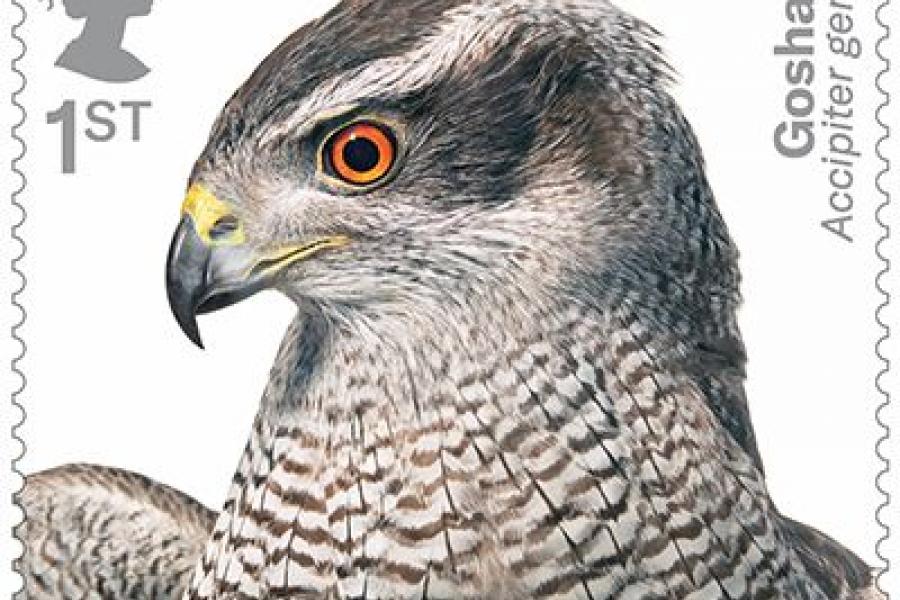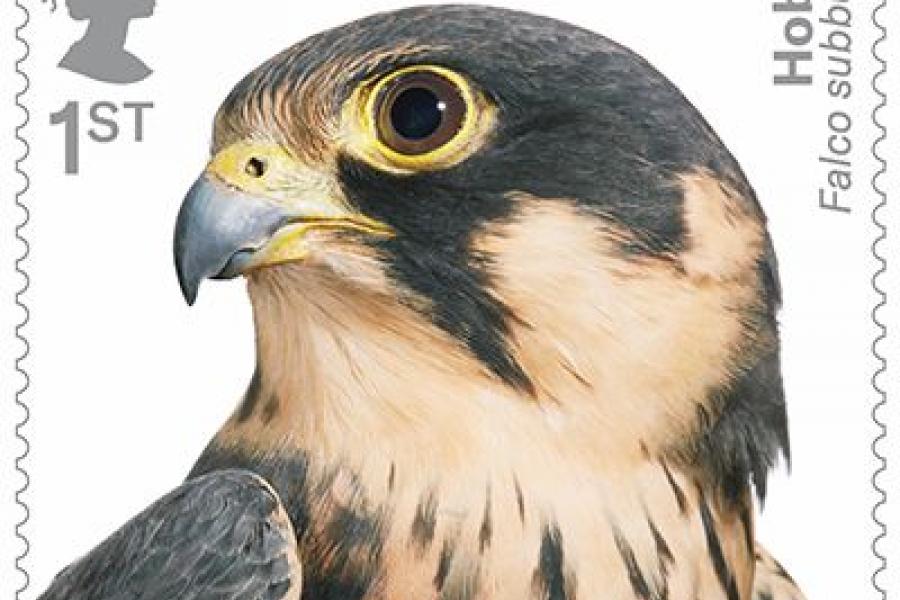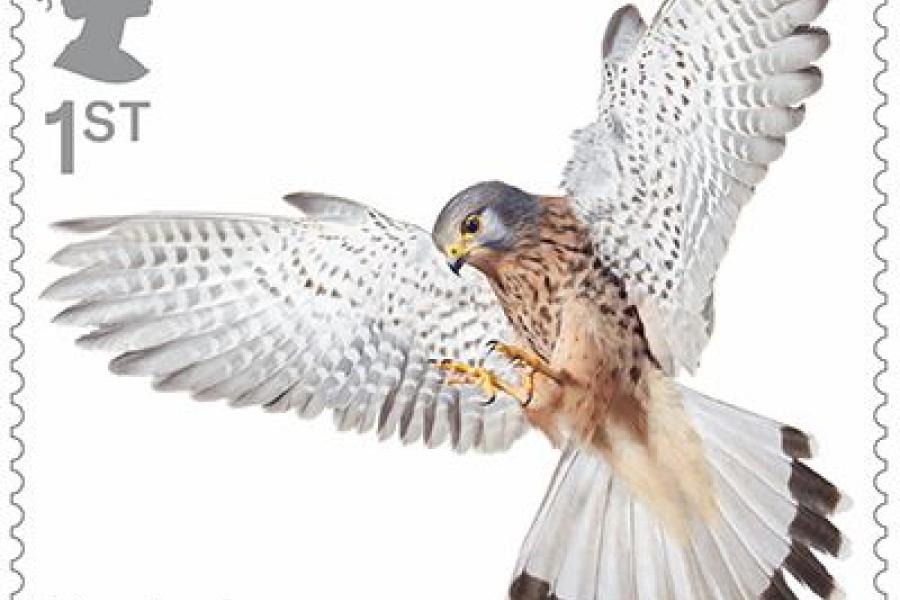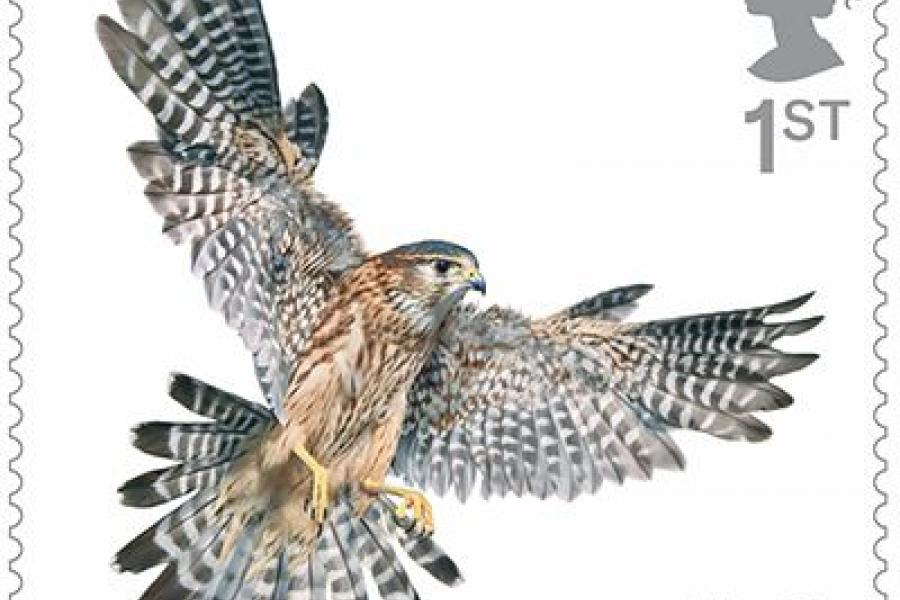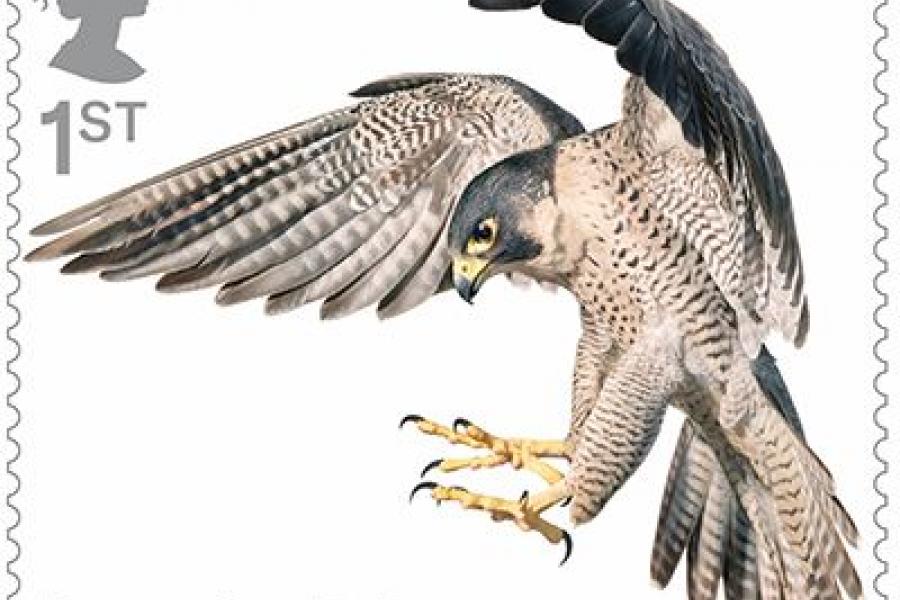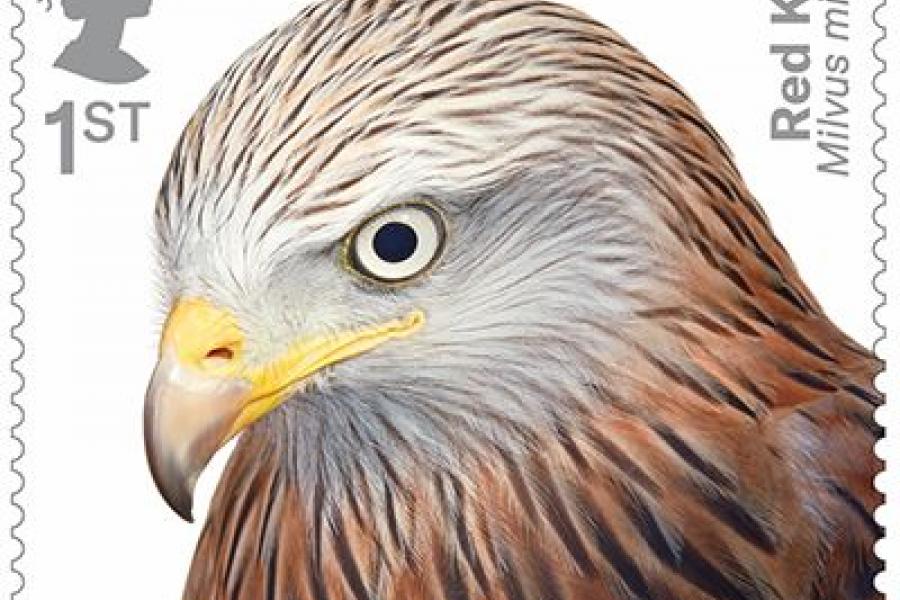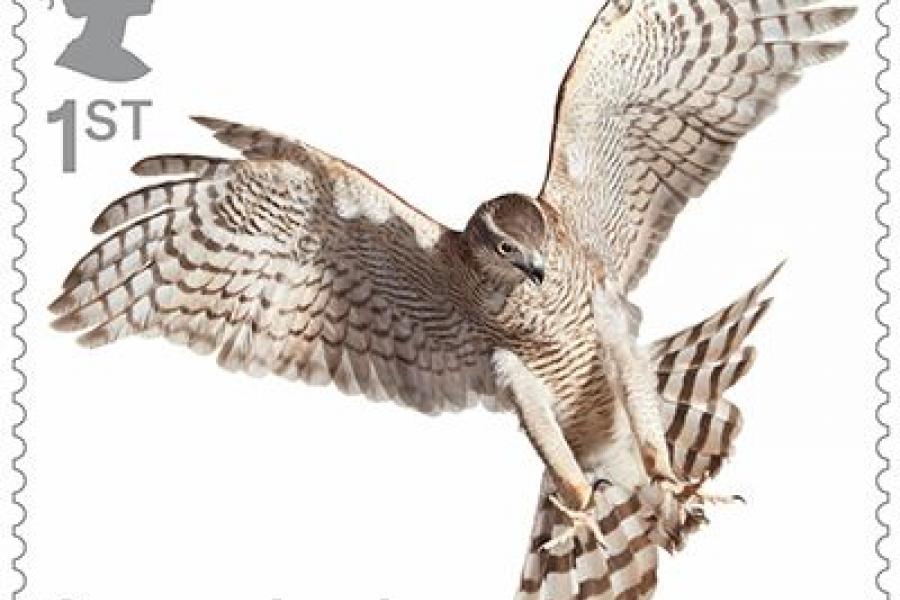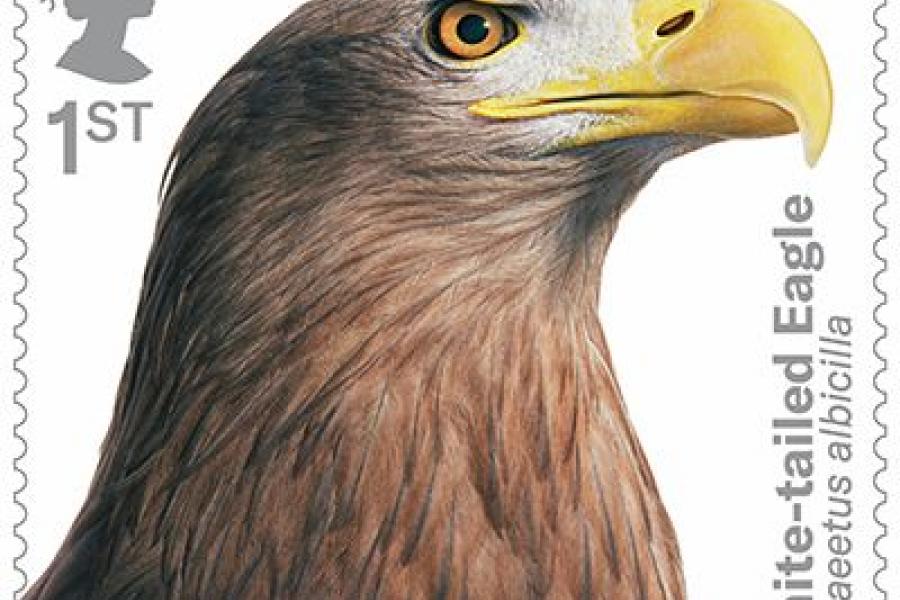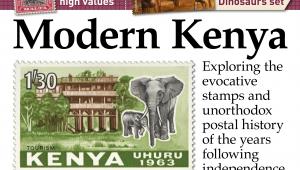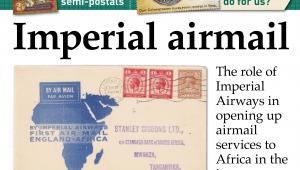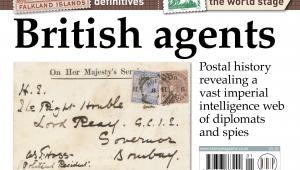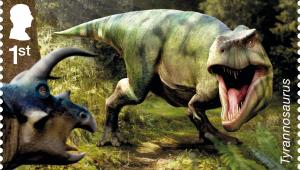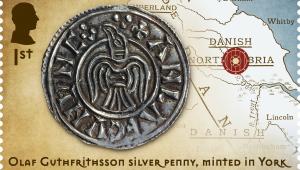Bird of Prey

The Birds of Prey stamp issue, released on April 4, celebrates 10 of Britain’s most spectacular avian predators.
They comprise all four falcons found in the UK (smaller birds from the Falconidae family), along with two eagles, two hawks, one buzzard and one kite (larger birds from the Accipitridae family).
All these raptors are nimble flyers with excellent binocular vision, which catch and carry off their prey with their feet. But their size, wing shape, habitat and distribution varies widely.
Each bird was beautifully photographed by leading wildlife photographer Tim Flach at the International Centre for Birds of Prey in Gloucestershire, five of them in close-up and five in flight and preparing to attack their prey.
The stamps were designed by Royal Mail Group, based on original concepts by GBH, and printed in litho by International Security Printers. They come in se-tenant strips of five.
Although national birds is this year’s Europa theme, none of these stamps carry the Europa logo.
1st class White-tailed Eagle
This very large eagle, Haliaeetus albicilla, catches fish or sea birds with a low, slow approach, dropping its feet into the water to snatch its prey. These eagles were persecuted to extinction in Britain by 1918, but in 1975 a release programme was started in Scotland, and the population is now around 60 breeding pairs.
1st class Merlin
The smallest of Britain’s raptors, Falco columbarius, is found on the uplands during the spring and summer, nesting on the ground underneath heather, but moves to lowland areas for the autumn and winter. Small and fast, and a specialist predator of small birds, it is seldom seen. Females and juveniles are brown, while adult males have a blue-grey back.
1st class Hobby
This little falcon, Falco subbuteo, migrates to the UK from Africa in the spring to breed. Often found near large bodies of water, and extremely nimble in flight, it usually feeds on dragonflies and other insects but during the breeding season it hunts for swallows and swifts to feed its young, before migrating back to Africa.
1st class Buzzard
The common (or Eurasian) buzzard, Buteo buteo, has enjoyed a huge increase in numbers since the 1970s, partly thanks to rabbit numbers recovering after outbreaks of myxomatosis. It is usually seen soaring on fine days, looking for rabbits and voles, or sitting on fences or ploughed fields in the winter, feeding on insects. There is large colour variation in this species, from cream to dark brown.
1st class Golden Eagle
This eagle, Aquila chrysaetos, inhabits remote moorlands and mountains in Scotland, soaring in search of rabbits, hares and birds but sometimes reliant on carrion during the winter. It is mostly dark brown, with golden feathers on the head and neck. It usually nests on cliff ledges, laying two eggs, although generally only one chick survives long enough to fledge.
1st class Kestrel
Once the UK’s most common raptor, often observed hovering by roads, this falcon, Falco tinnunculus, has decreased in numbers over the past two decades due to a shortage of suitable nesting sites and grasslands for hunting. It is best known for hunting mice and voles by hovering, often descending in stages to drop on its prey. All adults have a chestnut-red body, but the male has a grey head and the female has a barred back and tail.
1st class Goshawk
This forest-dwelling hawk, Accipiter gentilis, has a wing shape which allows it to twist and turn through trees at speed, and its long legs and powerful feet are well suited to hunting birds and mammals up to the size of a hare. It can sometimes also be seen soaring in good weather. Adults are grey and white, with fine horizontal bars on the breast.
1st class Sparrowhawk
This little hawk, Accipiter nisus, can be seen in gardens catching small birds at dawn and dusk. It is often unfairly blamed for the demise of small birds, when cats, cars, windows and pesticides are equally responsible. Its defining features include long, thin legs and yellow eyes, with males much smaller than females.
1st class Red Kite
Once persecuted close to extinction in Britain, this large and distinctive raptor, Milvus milvus, has been successfully reintroduced in many regions, where it can be seen soaring with its long wings and forked tail. It has small feet for its body size, which limits the prey it can catch, so it is mainly a scavenger, feeding on roadkill and carrion.
1st class Peregrine Falcon
Badly affected by pesticides in the mid-20th century, the peregrine, Falco peregrinus, has recovered dramatically and is now more of an urban bird, nesting on cathedrals and other tall buildings. With its short tail and long, pointed wings, it probably the fastest animal on the planet, and hunts birds on the wing.
OTHER PRODUCTS
The presentation pack, written by Jemima Parry-Jones, Director of International Centre for Birds of Prey, gives a detailed overview of the defining characteristics of each featured species, including wing shapes and sizes.
 PRICES
PRICES
Set of 10 stamps £7.00
Presentation pack £7.80
Stamp cards £4.50
First day cover £9.00
VERDICT
COMMEMORATIVE WORTH 3/5
These raptors are among Britain’s most dazzling wildlife, ideal for a thematic issue
QUALITY OF DESIGN 5/5
The photography is stunning, especially the action shots of the birds in flight
WOW FACTOR 4/5
Cutting out the images against a plain white background makes them particularly eye-catching
